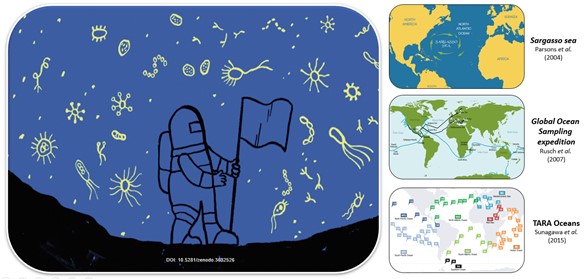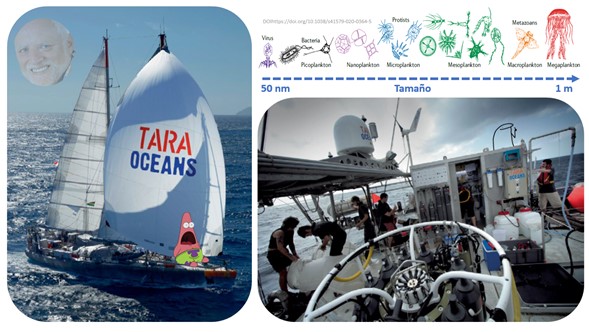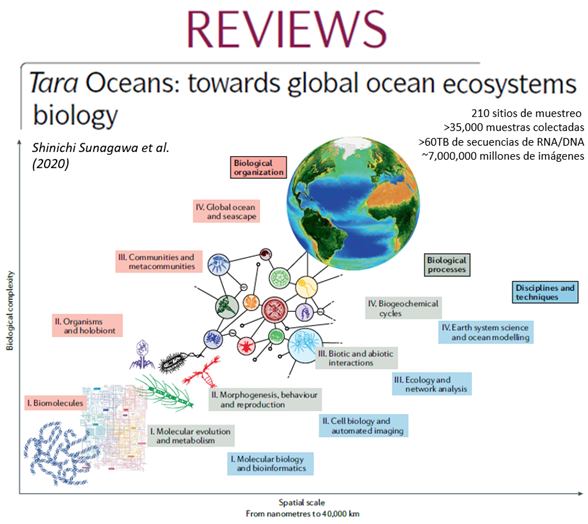Post 4: What if we sequence the entire ocean? 🌊
Published:
“The Earth is a megadiverse planet” that, to be understood, requires megaprojects. If we focus on the oceans that cover just over 70% of the Earth’s surface, the challenge sounds enormous in economic, logistical, and technical terms… but there are projects (F1).

The first major ocean genomics project was carried out in 2003 by Craig Venter and his team, who sequenced microorganisms in the Sargasso Sea in the Atlantic Ocean and found 1,200,000 new genes. A few years later, having proven the concept, the same team carried out the Global Ocean Sampling Expedition (GOS) project, which involved global-scale sampling and identified 6,120,000 new genes, almost doubling the number of genes already recorded in databases at that time. In 2008, the team led by French biologist Éric Karsenti conceptualized what is currently the largest ocean genomics project I know of, the Tara Oceans project (F2), funded by more than 20 institutions including the government of France, the European Union, NASA, and even philanthropic investments and contributions from the researchers themselves who conducted the expedition.

Tara Oceans is an incredible project in every sense of the word, aiming to understand the biology of nanometer particles such as viruses to metazoans like jellyfish, which inhabit the oceans from the epipelagic/surface zone to the mesopelagic at 1000m depth (F3). For this purpose, they collected just over 35,000 water samples from 210 sites distributed in all the oceans, recording 37 abiotic variables such as temperature, depth, and different chemical compounds. From each sample, they aimed to know its genomic content using techniques such as DNA sequencing (Metabarcoding), Metagenomics, Metatranscriptomics, and integrating the information with imagery, identifying ~36,000,000 new genes, just to mention one of the many results of the project.

In the article by Sunawaga et al. (2020) published a few days ago and commemorating the #100 publication of Tara Oceans, the project’s details are better detailed, from logistical terms to the necessary development of new bioinformatic techniques that led to changing many biology paradigms. Best of all, all the information, from the sequences, the more than 7,000,000 microphotographs, and records of abiotic variables, is publicly accessible so that anyone who wants to venture into analyzing them can do so. I leave you with more resources to learn about the topic, and if you have any questions, you know you can message me.
Refs.
